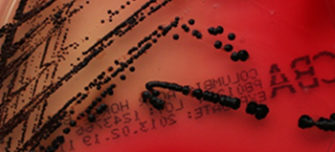Understanding bacteria and the challenges in microbiology

Bacteria are single-celled microbes. A bacterium's cell structure is simpler than that of other organisms as there is no nucleus or membrane-bound organelles. Instead their control centre, containing the genetic information is contained in a single loop of DNA.
Some bacteria have extra circles of genetic material called plasmids. The plasmid often contains genes that give the bacterium some advantage over other bacteria. For example, they may contain a genes that make the bacterium resistant to certain antibiotics.
Understanding bacteria
Bacteria are found in every habitat on Earth: soil, rock, oceans and even arctic snow. Some live in or on other organisms including plants and animals. There are approximately 10 times as many bacterial cells as human cells in the human body. A lot of these bacterial cells are found lining the digestive system.
Some bacteria live in the soil or on dead plant matter where they play an important role in the cycling of nutrients. Some types cause food spoilage and crop damage but others are incredibly useful in the production of fermented foods, such as yoghurt and soy sauce. Relatively few bacteria are parasites or pathogens that cause disease in animals and plants.
Why developing a better understanding of bacteria matters to microbiology
In 1945, Sir Alexander Fleming, co-founder and first President of the Microbiology Society predicted that antibiotics could one day become less useful in treating bacterial infections due to frequent and improper use. Now, in the present day, we are facing global concerns over the rising issue of antimicrobial resistance. It is therefore important for us to develop a thorough understanding of how bacteria coexist on different surfaces, the novel antimicrobial strategies that can help to provide an alternative to treating infections with antibiotics and how bacteria can affect our industrial world.
We will explore three key areas which are helping us to develop a better understanding of bacteria and the challenges in microbiology below. Click on each content hub to find out more about our members working to develop a better understanding of bacteria and to access our additional resources.
-
Novel antimicrobial strategies
Antimicrobial resistance (AMR) is when a micro-organism develops resistance to antimicrobials that were previously effective. We will explore some of the approaches we can take, and are currently undertaking, as a community, to improve global awareness, reduce non-essential usage of antimicrobials and invest in research to develop new antimicrobials and alternative antimicrobial therapies.
-
The world of biofilms
Biofilms are communities of micro-organisms that stick to each other and to surfaces. The composition and architecture of biofilms are complex and diverse. We will explore how these communities of micro-organisms can provide structural support, protection from surrounding threats such as antimicrobials, grazing predators and the immune responses of a host as it fights infections.
-
Bacteria in industry
Often, the first thing that comes to mind when we think about microbes in the built environment are damage, decay, discolouration and staining to building materials and their surfaces. What we often don’t consider is their ability to act as bioengineers. We will explore how bacteria have been successfully used on an industrial scale to prompt expansion into more diverse areas.
Image credits:
Judith ArmitageDavid Edwards
Chloe James
Stephen Garrett





